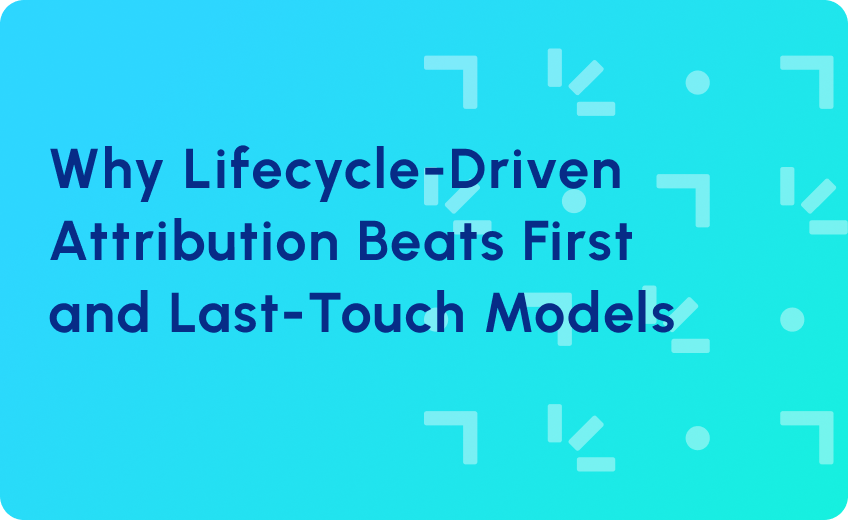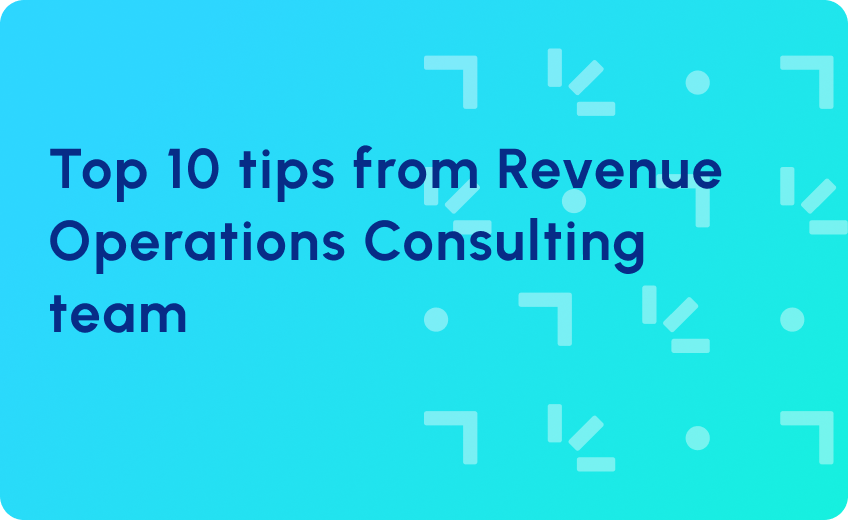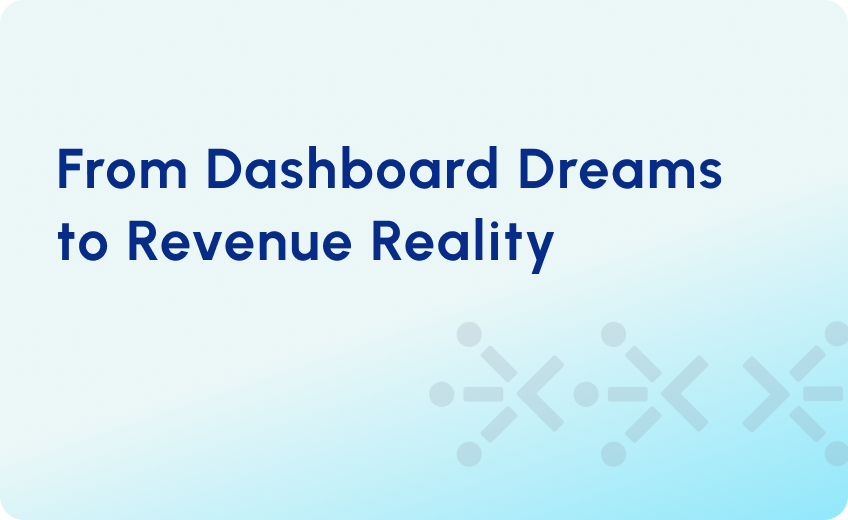
The Future of the B2B Lifecycle Model: Beyond MQLs and SQLs
The modern B2B buyer journey is no longer linear from awareness to decision. Instead, these journeys are fragmented, anonymous, and increasingly shaped by multi-threaded team interactions (both digital and human). Buyers jump forward, loop back, ghost, resurface, and bring others in halfway through the process.
Yet, many revenue teams still depend on legacy funnel models that rely on fixed stages like MQLs and SQLs. These rigid definitions fail to capture the complexity of modern buying behavior. Besides, they certainly don’t reflect team-based decisions or signal-driven engagement.
To build a revenue engine that matches how buyers actually buy, teams must adopt signal-based lifecycle models that reflect real-time buyer intent, team engagement, and account-level readiness.
This article will explore why it’s time to move beyond the MQL/SQL handoff and toward a collaborative, adaptive revenue strategy.
The Limitations of MQLs and SQLs
The traditional MQL framework was designed for a simpler time when a single form fill, webinar registration, or whitepaper download was considered a strong enough signal to trigger a handoff from Marketing to Sales. However, this model isolates individual engagement, failing to account for the complex, non-linear nature of modern B2B buying.
The modern buyer journey is also self-directed and often 70% complete before Sales ever gets involved.
A lead-based model overlooks this reality. It treats one engaged contact as a proxy for account readiness. This further results in missed buying signals and, ultimately, pipeline leakage.
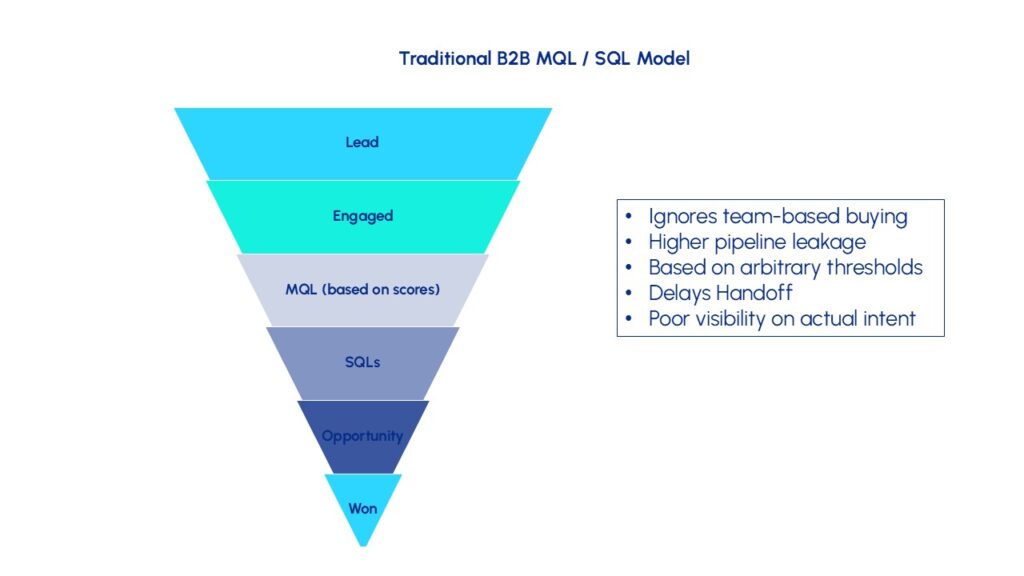
One model that supports this shift is “Opportunity at MQL,” which allows for the creation of an Opportunity the moment marketing engagement is detected, rather than waiting for a lead to hit arbitrary score thresholds.
This model:
- Accelerates sales response by creating Opportunities as soon as meaningful engagement occurs. This removes lag time between interest and action.
- Bypass score thresholds to focus on real buying signals instead of arbitrary qualification gates. This ensures the right accounts are prioritized based on actual intent.
- Align pipeline tracking with actual marketing engagement for clearer attribution and forecasting. That means you can forecast the pipeline based on real engagement data.
- Creates one unified object for Sales and Marketing alignment. When both teams work within the same record, it reduces friction and increases accountability across the funnel.
Reimagining Lifecycle Reporting with Signals, Not Stages
Modern lifecycle modeling isn’t about labeling contacts as “MQL” or “SQL.” It’s about surfacing the right signals—across roles, channels, and time—to drive action at every stage of the buyer journey.
With a signal-based reporting approach, revenue teams gain a real-time, account-level view of how buying groups are progressing (or stalling) through the funnel.
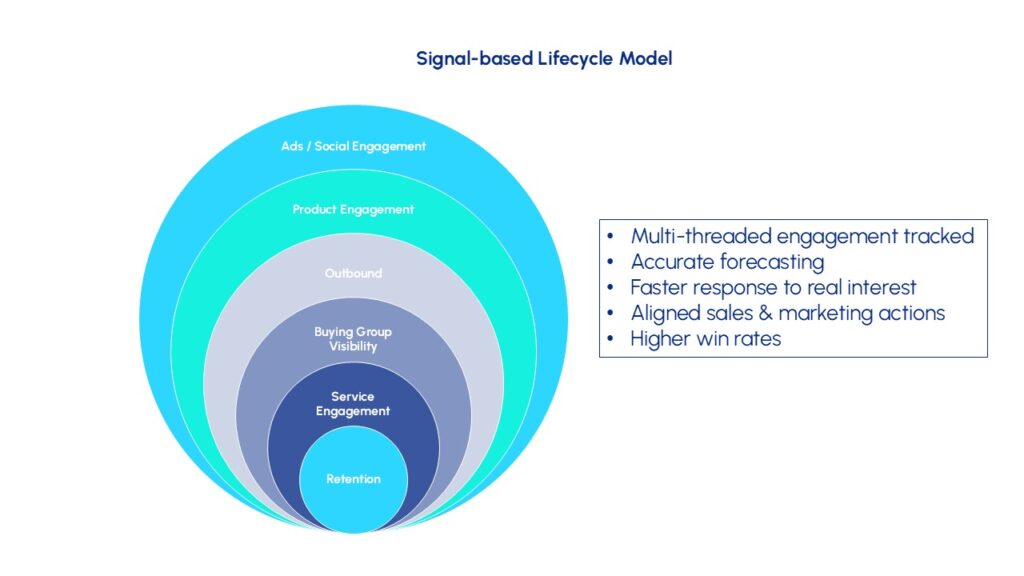
Signal based model lets you:
- Track velocity and progression based on actual engagement patterns, like product interest surges or multi-stakeholder activity, not just score thresholds.
- Pinpoint drop-offs by segment, such as SDR owner, industry, or campaign type, so you know where to intervene.
- Attribute campaign impact by analyzing how touchpoints influence stage progression, opportunity creation, and pipeline acceleration—not just form fills or clickthroughs.
- Diagnose actual buying intent by correlating key actions (e.g., demo requests, repeat logins, pricing page visits) with funnel advancement.
- Dynamically prioritize accounts using live behavioral signals, surfacing which buying groups are heating up, stalling, or getting cold.
- Guide rep outreach with contextual insights showing where each account is stuck—and what messaging can re-activate momentum.
- Redefine lifecycle stage definitions with real behavior-based criteria instead of relying on vague or outdated lifecycle stage labels.
Transitioning to a Signal-Driven Sales Approach
At RevOps Global, we specialize in Advanced Signal-Based Lifecycle Modeling in Salesforce, helping revenue teams move beyond rigid MQL/SQL stages. Our dynamic lifecycle solutions offer multi-path entry tracking, cohort-based analysis, and full funnel visibility—natively in Salesforce. By modeling how different buying groups and cohorts progress across time and channels, teams gain deeper insights into account readiness, forecastable engagement, and conversion blockers. This approach powers more accurate pipeline forecasting, faster handoffs, and higher win rates—all without relying on static lead scores or third-party tools.
Book a demo today to see how a signal-based, multi-threaded lifecycle model can unlock scalable, real-time pipeline insights.

